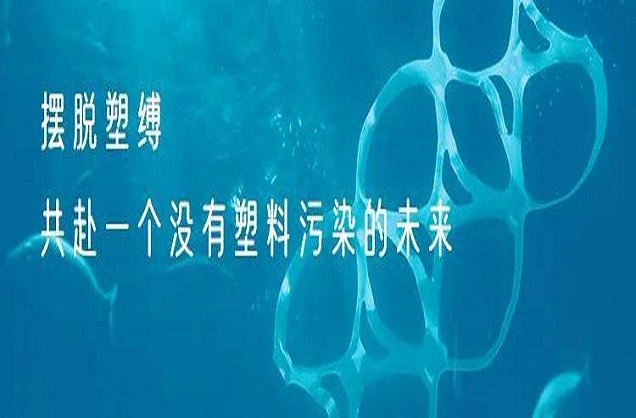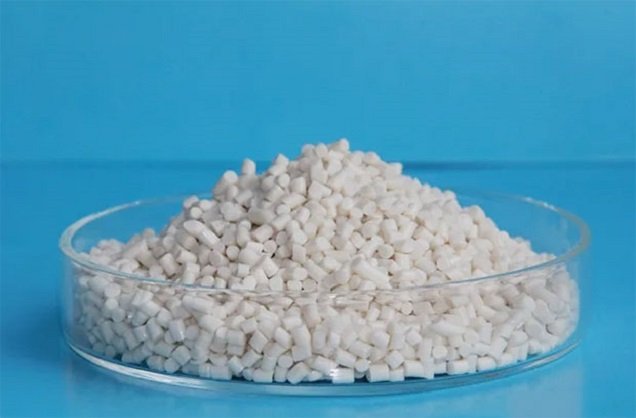Is “biodegradable plastic” really environmentally friendly?
There are five main varieties of common plastics in our life, namely, polyethylene (PE), polypropylene (PP), polyvinyl chloride (PVC), polystyrene (PS) and acrylonitrile-butadiene-styrene co-polymer (ABS) five types of plastics. The raw material of these five plastics is petroleum, belonging to the non-degradable plastics.
We usually say the pollution-free environmentally friendly materials, generally refers to “biodegradable plastics”, which is a kind of all all or part of the origin of biomass plastics. Biomass is a raw material of biological origin, excluding raw materials embedded in geological formations or petrochemicals. Plastics that can be broken down by microorganisms (bacteria or fungi) into water, naturally occurring gases such as carbon dioxide (CO2) and methane (CH4), and biomass (e.g., microbial population growth). Of course, biodegradability depends greatly on environmental conditions: temperature, microorganisms, the presence of oxygen and water.

“Pretended” and “conditional” degradation?
When there is a huge price difference between non-degradable and degradable materials, there are enough “business opportunities” in the middle ground.In addition to the biodegradable plastics represented by PLA, there are also plastics that can be mechanically split, such as starch-filled, photo-degradable and oxidative degradable plastics that are “pseudo-degradable”.
Photodegradable plastics are materials that degrade automatically under the action of light. Many photodegradable plastics are made by adding photosensitizers to the material, which become smaller powders under light conditions. There are also some so-called degradable materials with a certain proportion of starch added, through the biodegradation of starch is the physical properties of the material collapse. After the decomposition of PE, PP, PVC, etc. not only can not be absorbed by the environment, but because the naked eye is not visible will always remain in the environment, causing greater harm. Therefore, the European Union and the United States and other developed countries have been categorized as phase-out type of such products.

Compared with some of the products, PLA and other materials can at least theoretically achieve a more pure degradation of matter. In practice, however, they may still fall short of our expectations.In the report “Bioplastics 2020-2025” by research organization IDTechEx, PLA is cited as an example, “If a PLA bottle is thrown into the sea, it will take hundreds of years to break down.” The report notes that PLA would break down in an industrial composting facility, “where PLA can be heated to a high enough temperature that microbes can break it down at a sizable rate.”
And there have been similar experiments done in real environments by research institutes and environmental volunteers: a 12-month PLA plastic test at the Central South Forestry University of Science and Technology in 2014 that simulated natural soil only lost 0.23% of its mass after 12 months; a 400-day test at Germany's Meiluot University in 2017 that was laid out inside seawater and freshwater, and ended up with only about a 0.5% loss of mass in the PLA; and that's where a lot of the Another status quo facing biodegradable plastics is that the theoretical conditions for degradation are not allowed in reality.
PLA materials need to be composted to degrade, but are there currently any facilities dedicated to composting these materials? Even in the most successful garbage classification done in Shanghai, food waste still need to “break the bag” put, the plastic bag is classified as “dry garbage”, regardless of whether it is biodegradable, all burned.

Even if we use the idea of recycling to solve the problem, it is difficult to distinguish between traditional plastic bags and biodegradable plastic bags. In recycling, if we standardize the production of plastic pellets, materials such as PLA will affect the quality of the product; if we standardize the degradation, the traditional plastic will become an impurity.
In addition, PLA materials need to consume corn and other food crops to ferment lactic acid. The production of food crops is affected by harvest conditions, international markets and other factors, and the source may be highly volatile. Therefore, biodegradable plastics, represented by materials such as PLA, look wonderful, but there are still many insurmountable obstacles at this stage.
 Significant progress in PBAT/s
Significant progress in PBAT/s
 PLA/PBAT composite film degrad
PLA/PBAT composite film degrad
 A New Choice for Takeaway Pack
A New Choice for Takeaway Pack
 Significant progress in PBAT+s
Significant progress in PBAT+s
CONTACT
Add: Room 4006, No.1 Helong Yiheng Road, Baiyun District, Guangzhou City
Tel: +8613450255948
Wechat : +86-13450255948
Fax: +86-13450255948
E-mail: 13450255948@163.com








